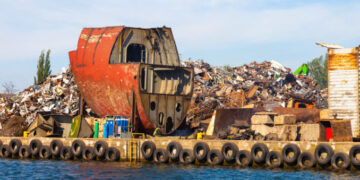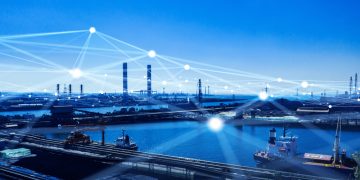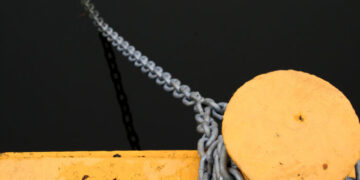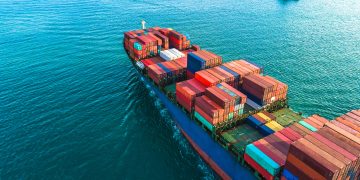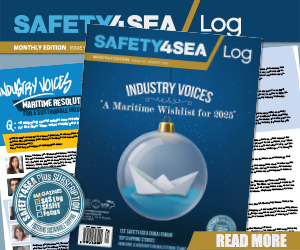In an exclusive interview to SAFETY4SEA, Andrew Roberts, Executive Director, EMEA, RightShip, refers to the key challenges facing the tanker sector and emphasizes the importance of independent vetting inspections, which assess qualitative criteria and have the potential to highlight crucial operational challenges.
Roberts also underscores the transformative influence of advancing technology on the industry, citing machine learning, 3D printing, and AI as pivotal drivers for enhanced performance. He concludes by proposing a fresh outlook on vetting and assurance procedures, framing them as avenues for crew improvement and meaningful self-assessment.
SAFETY4SEA: What are the key challenges faced by the tanker sector from your perspective?
Andrew Roberts: The shipping industry overall is facing a number of key challenges which are present in the tanker sector also. Firstly, the average age of the world fleet is increasing. For the tanker sector RightShip’s data suggests the youngest average age exists in the Aframax Tanker sector, and this is around 17 years old. Whilst there have been some new orders placed recently, there is still apparent reluctance to activate fleet replacement strategies against the backdrop of not knowing which alternative fuel will prevail. This has potential to sweat the assets and limit the maintenance and funds spent to keep the vessels at their very best amidst the potential of selling assets in the near future. To build on this, impact from COVID seen an outflux of seafarers. However, the potential for skilled seafarers to leave the industry is further exacerbated with current challenges faced; ships being attacked by missiles, captured by pirates, or abandoned. In fact, 2023 saw a higher number of seafarer abandonment cases than 2022. Aside from the mental impacts this has on crew, this outflux removes valuable knowledge and skill, increasing workload on those remaining. Together these circumstances can result in a reduction of standards on board vessels increasing the likelihood, and potential severity of PSC related deficiencies or detentions, or incidents. For example, in 2023 RightShip registered more than 25 fatalities in the tanker sector.
S4S: When it comes to tankers sector and vetting, what are your top priorities on the RightShips’ agenda?
A.R.: Our solitary priority is clear, the preservation of life. RightShip’s data still shows a considerable number of fatalities on an annual basis beyond the tanker sector. Concerningly, despite our maturity as an industry, many fatalities occur frequently from exposure to hazards and circumstances for which much awareness is raised. Examples include fatalities from entering enclosed or confined spaces, or falling from height, crushed injuries and such incidents occur on all vessel types. Our duty at RightShip is to help organisations to manage risk. We do this in various ways and our ability to help organisations to evaluate risk more comprehensively, or implement more robust corrective action plans can make the difference between an incident or not, or a fatality or not.
S4S: Can you provide insights into the evolution of vessel assurance in the tanker sector over the last decades?
A.R.: Over the last 3 decades the tanker sector has adapted to vessel assurance as a norm. Tankers are inspected from cradle to grave to evaluate them for not only regulatory and statutory compliance, but for best industry practices that have been built up and refined over the same period. As such, there is broad acceptance of these inspections and processes and they form an essential part of any robust vessel assurance process for charterers, traders, ports, terminals, banks etc. However, there are other factors that have aided in the improvement of standards. The advancement of technology, the improvement (and refinement) of on board processes, and advancement in on board and shore side training are all factors that that have aided to improve and have helped to evolve the vessel assurance processes.
S4S: In your opinion, what are some of the key factors contributing to the improvement of safety standards in the tanker industry through maritime assurance practices?
A.R.: One of the fundamental benefits of vetting and assurance programmes are that the frameworks are made available to ship owners and managers to facilitate self-evaluation however the inspections are performed by third parties that provide an independent objective evaluation that often identifies areas for improvement that have been overlooked by ship staff or company staff visiting vessels.
S4S: What new risks do you see emerging that will shape the future of maritime assurance vetting?
A.R.: There are many potential new risks however certainly risk faced from the transition, implementation and management of new fuels; digitalization and the ability to recruit and retain seafarers are perhaps the most prominent that seem to be shared by the industry. To elaborate on the first of these, new fuels will present a number of potential challenges as crews across the world will need to be trained on the safe handling and management.
S4S: What role do you see technology playing in enhancing the performance of tanker sector?
A.R.: In today’s society, technology is a very vague term and I would like to touch on a few different points here, however overall ‘technology’ will help to reshape the whole maritime industry for the future. When we consider the term technology, we can naturally be drawn to legacy equipment and systems that are used on board ships. If hold that focus, we can identify equipment that has helped to drive safety performance, e.g. the advancement of radars. We have also seen how technology such as personal or portable gas detectors are critical in saving lives. However, how future technology drives impact I believe will, and already is, multifaceted. For example, the advancement in digital technologies and data applications can process information much quicker, spot patterns and predict failure. Having such advance warnings or information can facilitate quicker decision making and enable a shift of response from reactive to proactive. This could reduce incidents, and the need for ship staff to undertake ‘emergency’ unplanned maintenance tasks which often carry risk. An interesting consideration of ‘technology’ is high performance anti fouling coating systems on ships hulls. These advanced coating systems are now guaranteed against ISO standards and monitored for performance. However, the superior performance they offer reduce the need for deviations of ships generally to busy port locations to clean propellers and hulls which generally require dangerous in water diving operations. However additional technological applications such as machine learning, 3D printing, and AI will undoubtedly play a critical role in driving enhance performance.
S4S: With increasing scrutiny, compliance, and regulation, how do you envision the vetting sector adapting?
A.R.: The vetting sector will always ensure that regulatory and statutory compliance elements are accounted for and reviewed, accounting for future changes. However, a key point to highlight here is that independent vetting inspections of vessels are focussed not only on regulatory compliance, but on industry and sector specific best practices that exceed minimum requirements. I do not see that this will change, but potentially intensify. And there is an absolute need for this since there is so much inconsistency in port state control inspections and flag state inspections who have a fundamental role in verifying standards. For example, a ship could be registered with a Flag State that do not perform annual inspections of a vessel, and the vessel could easily trade for a period of 2 years without having a port state control inspection. A lot can happen in this time and therefore independent vetting inspections that evaluate against qualitative criteria can have significant influence on surfacing critical operational issues.
S4S: Are there any notable trends or innovations in vessel assurance and vetting practices that you believe will have a significant impact in the near future?
A.R.: Perhaps to first comment on items that we believe will not change and principally that is the role of on-board physical inspections by people. In short, we do not see a near term change in this. What will aid in driving vessel assurance trends or innovations however is the role of data and technology to provide more robust insights and analytics. The ability to integrate broader data sets into vessel assurance process aids to reduce the potential for linear evaluation, and instead provide a greater systems perspective, of a vessel, company, trade route etc. Such insights may be symptomatic of a number of different elements and having a greater system will be a key enabler.
S4S: How can stakeholders in the tanker sector collaborate more effectively to address the evolving challenges and opportunities with regards to vetting?
A.R.: Ultimately data will aid in more effective collaboration between parties, not only in the tanker sector but cross sectoral also.
S4S: In your view, what needs to be addressed in the tanker sector to drive change and raise awareness around human factors?
A.R.: Improving accessibility and caring for crew is my short answer. Promoting greater understanding of the work that seafarers do, and having empathy is a first starting point. It’s the recognition of the incredibly important (and dangerous) work that seafarers do, the recognition of how solitary life at sea can be for extended periods of time; and the recognition that in many cases, conditions and support provided for seafarers are wholly inadequate. As human beings, none of us are infallible however when such circumstances exist, it is easy to see how lack of motivation and absent mindedness can be a contributory factor of incidents on board.
S4S: What is your key message to tanker industry stakeholders in order to enhance crew motivation and competence?
A.R.: Firstly, we must acknowledge the great work that the crew do, under such intractable circumstances and say thank you. However, I have two points to share here. The first is the mindset of what vetting and assurance processes do. They have a higher purpose to reduce incidents and ultimately save lives, and therefore reframing them not as a test, or an inconvenience, but rather an opportunity for improvement is a critical first step. The second is make it meaningful and dare I say fun. Vetting frameworks can be used by ships crews’ to proactively self-evaluate. This can be completed in teams, where you buddy up with colleagues on board empowered to evaluate each other’s areas of responsibility. See what you find and put it right. Perhaps your actions could save someone’s life.
The views presented are only those of the authors and do not necessarily reflect those of SAFETY4SEA and are for information sharing and discussion purposes only.







